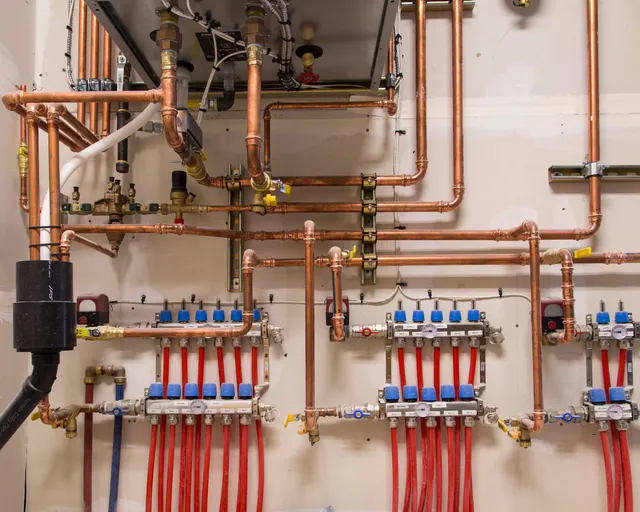
Piping and Re-piping
Piping and re-piping are key components of a building’s plumbing system, involving the installation, maintenance, and eventual replacement of pipes that transport water, waste, and gas. Whether you’re dealing with a new construction project or updating an existing structure, understanding the essentials of piping and repiping is crucial for ensuring the longevity and efficiency of your plumbing system.
Piping refers to the network of tubes that carries fluids (liquid or gas) throughout a building. This network is critical for a variety of functions, from delivering clean water to disposing of waste and providing gas for heating and cooking. Pipes are made from various materials, each suited to different uses and conditions. Common materials include copper (known for durability and reliability), PEX (flexible and resistant to scale and chlorine), PVC (cost-effective and used for drain lines), and galvanized steel (strong but susceptible to corrosion). Proper installation is crucial to prevent leaks, maintain water pressure, and ensure longevity. This often involves soldering copper pipes, crimping PEX, or gluing PVC joints.
Re-piping is the process of replacing old or faulty pipes in a building. This is often a necessary measure to address problems such as leaks, corrosion, and reduced water quality or pressure. Frequent leaks, rusty water, low water pressure, and noises from pipes are common indicators that show you need repiping. In homes over 50 years old, repiping might be needed simply due to age.
The re-piping process can be disruptive, as it often requires access to walls and floors. Call Now Plumbing includes planning the new pipe layout, removing old piping, installing new pipes, and then restoring any disturbed areas of the building. When selecting materials, we include modern options like PEX for its flexibility and ease of installation, or copper for its longevity.
Piping and re-piping are crucial for maintaining the functionality and safety of a building’s plumbing system. While piping involves the installation of a fluid transport network, re-piping replaces this network when it becomes old or defective. Understanding the materials, and processes involved can help you make informed decisions about your plumbing needs.
Signs that it might be time to replace your pipes include:

Unexpectedly High Water Bills
This can indicate leaks that you may not yet have detected visually.

Reduced Water Pressure
This often happens with metal pipes, as mineral deposits can accumulate and obstruct water flow.

Frequent Water Leaks
Aging pipes may develop weaknesses, leading to increasingly common leaks. These leaks can result in mold or water damage if not addressed.

Discolored Water
If water appears brown or rust-colored, it might be due to rust or corrosion within your pipes, contaminating the water flowing to your faucets and fixtures.
It’s crucial to recognize these signs regardless of your property’s age, as they can help prevent future inconvenience, save money, and avoid extensive damage.
If your home has copper piping, you should be extra vigilant. The treated water can extract minerals from copper pipes and gradually weaken them, making them susceptible to leaks. Visible leaks or damage often serve as the initial warning that repiping might be necessary.
Services
- Boilers and Heating Systems
- Commercial Plumbing Solutions
- Drains
- Emergency Plumbing Services
- Faucet and Sink Services
- Garbage Disposals
- Gas Line Services
- Leak Detection
- Outdoor Plumbing Solutions
- Piping & Re-piping
- Plumbing Repairs
- Sewer Services
- Showers & Toilets
- Water Heaters
- Water Line Maintenance
- Water Treatment Systems
+1 (888) 695-0243
Contact Call Now Plumbing to schedule a service call.
Don't let a plumbing emergency disrupt your life.
Call Now Plumbing to resolve your plumbing crisis with professionalism and care.

